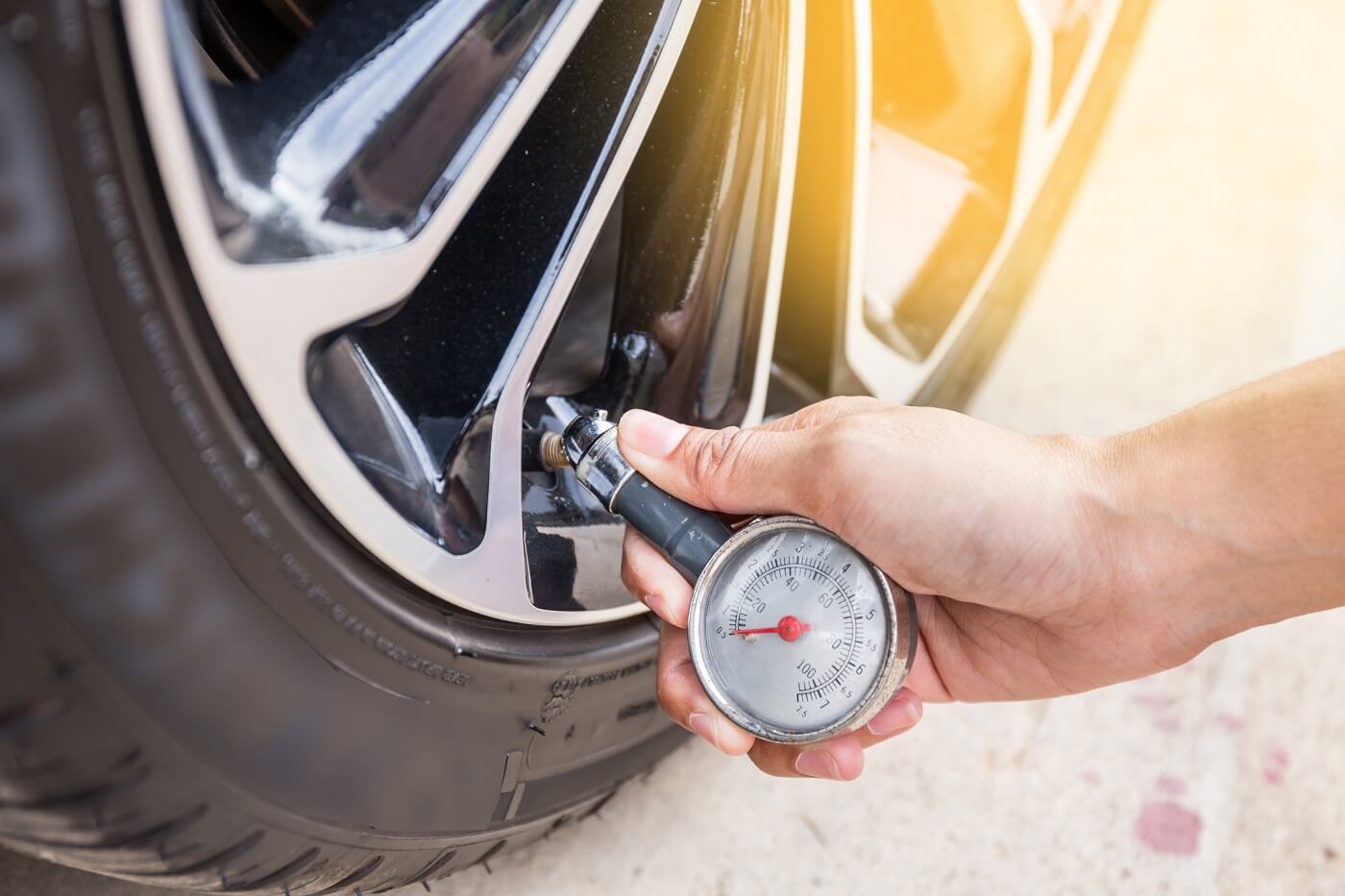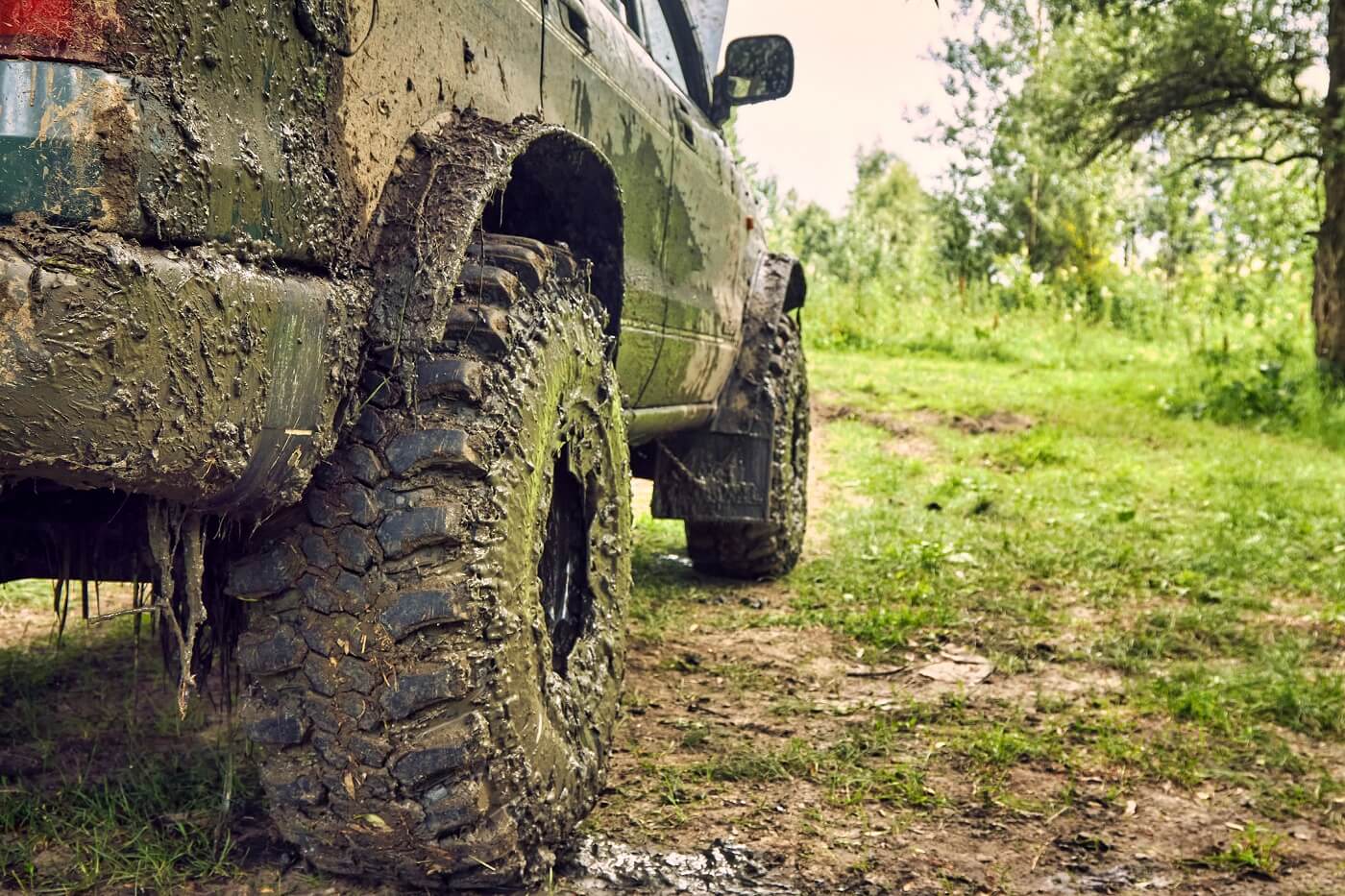How to select the correct tyre pressures for your 4WD

Benefits of Having the Correct Tyre Pressures
Setting the correct tyre pressures is crucial if you want to achieve peak vehicle performance across various aspects, including traction, grip, ride quality, fuel economy, as well as maximising tyre lifespan by ensuring even wear across the tread face and preserving sidewall durability.
When it comes to off-road driving, the need to establish the appropriate tyre pressures amplifies even further. Modifying air pressure to align with diverse terrain types not only enhances vehicle performance, ride quality, and tyre longevity but also minimises the potential for track damage.
How Often Should I Check Tyre Pressure?
Offroaders and 4WD enthusiasts are often double checking tyre pressure depending on what terrain they’re crossing and what speeds they’re driving at, but why? What’s the point?
The recommended tyre pressures on your tyre placard assume traveling on sealed roads at highway speeds, and this is perfectly fine for most users, but in order to maximise traction and prolong tyre life, adjusting tyre pressures can significantly improve your vehicles capabilities.
Tyre Pressure on Different Driving Conditions

Well-Maintained Dirt Tracks or Gravel Roads
When on gravel roads and dirt tracks, the dynamics of driving differ significantly from those of sealed roads, this means adjusting tyre pressures to suit the differing conditions.
In the case of smooth and well-maintained gravel roads that would see you traveling similar to highway speeds, it may still be appropriate to maintain your regular on-road tyre pressures. However, it is crucial to acknowledge that the loose surface impairs traction and grip, compromising cornering capabilities and necessitating extended braking distances. By decreasing tyre pressures, you expand the tyre's contact area with the ground, enhancing traction and grip. Additionally, the more pliant sidewalls contribute to a smoother ride quality.
How much should one reduce tyre pressures? As a general guideline, if your on-road pressures stand at 35psi, you might consider lowering them to approximately 30psi for smooth gravel roads. Should the road conditions deteriorate further, additional pressure reduction may be warranted.
Drawing from experience, I would suggest a range of 32psi to as low as 26psi for rough gravel roads, contingent upon the load being carried. For instance, if your on-road pressures were initially set at 38psi, reducing them to around 32psi on rough gravel surfaces would be advisable to assess the vehicle's ride and handling characteristics. Similarly, if you typically maintain 35psi on sealed roads, decreasing to approximately 26psi on rough gravel roads might be appropriate.
Lowering tyre pressures on heavily corrugated roads reaps numerous benefits that are appreciated by both driver and passengers alike. The enhanced ride quality resulting from reduced pressures contributes to the comfort of everyone inside the vehicle and reduces driving fatigue. Moreover, lower pressures mitigate potential vehicle damage caused by incessant vibrations and heighten grip, rendering the vehicle more manageable to operate.
Beyond the advantages of improved traction, grip, and ride quality, decreasing tyre pressures for gravel roads also serves to mitigate the risk of chipping along the tyre tread surface. The increased flexibility of the tyres renders them less susceptible to impacts from sharp stones and rocks.
Bitumen
After returning to the road, remember to reinflate your tyres to appropriate on-road pressures. Take a moment to inspect the tyres for any indications of harm during the inflation process. Should you come across any, you will need to address the issue by either repairing the tyre or substituting it with a spare one. Additionally, inspect the valve stems for potential leaks and ensure that the dust caps are securely fastened after reinflation.
If you have a brief span of asphalt ahead before transitioning back to gravel, it is usually okay to maintain reduced tire pressures. However, exercise caution and moderate your speed to prevent excessive tyre heating.
Sand
Everyone seems to know about the practice of reducing tyre pressure for sand driving, but the burning question remains: how low is low enough, and why should you bother?
Let's dive into the "why" first. As we've previously covered, decreasing tyre pressures enlarges the contact area between the tyre and the sand. This, in turn, allows the tyres to gracefully skim across the surface rather than forcefully digging into it.
Now, the issue of "how low." When traversing soft sand, you have the liberty to lower your tyre pressures to a maximum of 16psi without risking them peeling off the rims. Of course, this is on the condition that you refrain from executing abrupt steering manoeuvres or attempting high-speed cornering. And please bear in mind, when operating with reduced pressures on sandy terrain, it's important to exercise caution and avoid excessive speeds, as excessive heat can accumulate rapidly, resulting in tyre damage.
On the subject of harder-packed sand, the degree of pressure reduction may not need to be as drastic. You'll learn and adjust as you go, gauging the ease or difficulty of maintaining forward momentum. If the going is relatively smooth, resist the urge to drop pressures excessively. However, if it feels like a laborious slog, it may be worthwhile to go lower.
Reducing tyre pressures in sand accomplishes two significant feats: it reduces the likelihood of getting bogged down and alleviates strain on your vehicle. Moreover, it diminishes the frequency of track damage. So, don't be counted among the individuals who stubbornly ignore the necessity of pressure reduction when tackling sandy terrains.
Mud
The kind of mud you encounter determines the appropriate tyre pressures for mud driving.
What kind of mud, you ask?! Well, if the surface is slippery and slimy, yet you can sense a solid foundation beneath, employing gravel-road tyre pressures (ranging from 26 to 30psi) will enable the tyres to slice through the upper layer, potentially gaining traction on the sturdy base.
In the event of deep and gooey mud where a firm foundation is non-existent, reducing tyre pressures to as low as 22psi offers hope for the tyres to secure a foothold in the quagmire, courtesy of the resulting elongated tyre footprint.
Similar to rock driving, exercise caution if you have significantly decreased tyre pressures to conquer mud obstacles. Avoid sudden throttle or steering inputs, as it could cause the tyre to slip on the rim or allow mud to infiltrate the area between the bead and the rim, resulting in rapid tyre deflation.
If your vehicle is equipped with bead-locks that firmly secure the tyres to their respective rims, you have the flexibility to further decrease pressures for mud driving. However, it is prudent to verify the legality of such devices within your state or territory before embarking on this path.

Rocks
To enhance traction and diminish the possibility of tyre damage, it is advisable to reduce tyre pressures when navigating rocky terrain. This allows the tyres to exhibit flexibility, enabling them to adapt to uneven surfaces more effectively. As previously mentioned, lower pressures also yield a lengthier tyre footprint, which further bolsters traction.
When engaging in slow and deliberate crawling over rocky terrain in low range, you have the liberty to significantly decrease tyre pressures, as concerns regarding heat generation from high-speed travel are negligible. But how low should you go? If you're utilizing robust LT tyres, commencing at 22psi is a prudent starting point for rock crawling endeavors. However, exercise caution and ensure that your throttle and steering inputs are gradual and thoughtful. Abrupt bursts of acceleration or steering maneuvers may result in the tyres slipping on their respective rims, potentially leading to deflation or even complete detachment from the rims.
It is important to acknowledge a drawback to reducing tyre pressures in rocky terrain: an elevated vulnerability to sidewall damage. As pressures decrease, the sidewalls of the tyres protrude, making them more susceptible to harm from sharp rocks, exposed tree roots, and similar obstacles encountered in rocky environments.
Once the track conditions improve, it is imperative to reinflate your tyres. As your velocity increases, so does the generation of tyre heat, subsequently elevating the risk of tyre damage.
Get in Touch with Integrity Tyres
If you experience any issues related to your vehicle's tyre pressure or any other mechanical problems, feel free to contact Integrity Tyres by booking our services online or visiting any of our stores to schedule a check-up. Our three stores are conveniently located in the suburbs of Perth: Wangara, Osborne Park, and Welshpool.
In addition to our expert mechanical services, we offer a wide selection of high-quality tyres and wheels at competitive prices. Whether you need routine maintenance or a more extensive repair, our team of experienced professionals is dedicated to ensuring your vehicle is running at its best.
